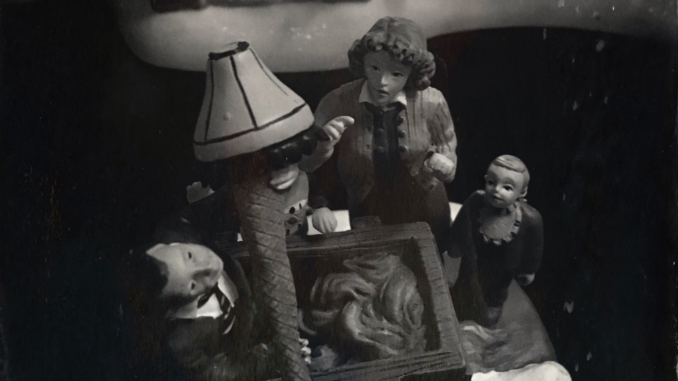
If you love movie trivia, there’s a trove of trivia on “A Christmas Story” out there in internet land. I have painstakingly picked out the most interesting details (to me) which I’ll now drone on about like the weird Uncle visiting for the holidays from out of state.
If you could care less about trivia and Christmas movies aren’t your thing, just be quiet, follow along, nodding politely, and pretend you’re interested. Because it’s Christmas, that’s why.
Mandatory spoiler alert: if you’ve never seen the movie (and where have you been?), plot details and surprises may be inadvertently given away herein. Stop reading and go watch it right now. Otherwise, proceed at your own risk.
Jean Shepherd knew how to tell a good story. Author of “In God We Trust, All Others Pay Cash” (1966) and “Wanda Hickey’s Night of Golden Memories and Other Disasters” (1971), he drew on stories from these semi-fictional novels when he co-wrote the screenplay for “A Christmas Story” (1983).
The movie tells the story of nine-year-old Ralphie Parker in the weeks up to and including Christmas day, ostensibly sometime in the 1940’s. Ralphie, his brother Randy, his mother, and his father (The Old Man) live in Hammond, Indiana, on Cleveland Street, which also happens to be where Jean Parker Shepherd grew up.
To be specific, Shepard grew up at 2907 Cleveland Street, Hammond, Indiana. The house filmed in the movie is actually at 3159 West 11th Street, in Cleveland, Ohio. That house was auctioned in 2005 on Ebay and sold for $150K. The guy who bought it, Brian Jones, you might say is a huge fan of “A Christmas Story”. Jones reportedly poured a half million dollars into restoring the house to look exactly the way it did on film. He even rearranged the floor-plan to duplicate the movie sets. Anyone can now spend the night in “A Christmas Story House”, sort of like a bed-and-breakfast, but without breakfast.
To further prove his fan bonafides, Jones bought the house next door, fixed it up, and christened it “The Bumpus House”, after the undesirable neighbors next door to the fictional Parkers. “The Bumpus House” is also available for nightly rental.
Jones was not yet done. He converted a home across the street into a museum, featuring original costumes and props, as well as memorabilia and photos taken behind-the-scenes during filming. The antique firetruck from the “triple-dog-dare-you” flagpole scene is just one item from the movie to be found at “A Christmas Story Museum”.
Among fans of “A Christmas Story”, there is much contentious debate regarding which year the movie takes place in, based mostly on the props in the film but also on some dialogue. There are fascinating (remember – it’s Christmas) but contradictory clues as to when the story takes place, from as early as 1930, to as late as 1946. To wit:
The toy Zeppelin gift that Randy receives for Christmas really throws a wrench into the calculations. The company that made the toy went out of business in 1931, and the Hindenburg crashed and burned in 1937. Two good reasons the movie might have taken place in the early thirties, but never the forties. The airship was probably just a childhood recollection of Shepard’s, as he was born in 1921 and would have been nine years old (Ralphie’s age) in 1930.
Old Man Parker drove a 1937 Oldsmobile Model 6 sedan, four door. Obviously this dictates the story takes place no earlier than 1937.
There are references made to “The Wizard Of Oz”, which first showed in 1939. That would have been old news by the 1940s.
Ralphie’s Little Orphan Annie secret decoder ring, made of metal, has ‘1940’ stamped on it. And, after 1940 the decoder rings were made of paper. So the year the movie takes place is 1940, right? Maybe.
The Old Man, while reading the newspaper, notes that a ball player nicknamed “bullfrog” was traded by the White Sox to another team. That happened in 1946.
So when did this movie take place? It really doesn’t matter. Normally I’m a stickler for details and consistency. Here, the movie makers just threw in a bunch of bits of nostalgia that might appeal to a wide audience, and it payed off in a huge way. So, I’ll make an exception in this case, despite the numerous inconsistencies, because the movie is great storytelling, classic americana, and an icon of the American Christmas experience.
There’s much, much, more to tell. But I can see some of you kids are bored. So I’ll wrap up my monologue. Anyone who wants more can read it at IMDB.
Question of the night: What’s your favorite Christmas movie?
